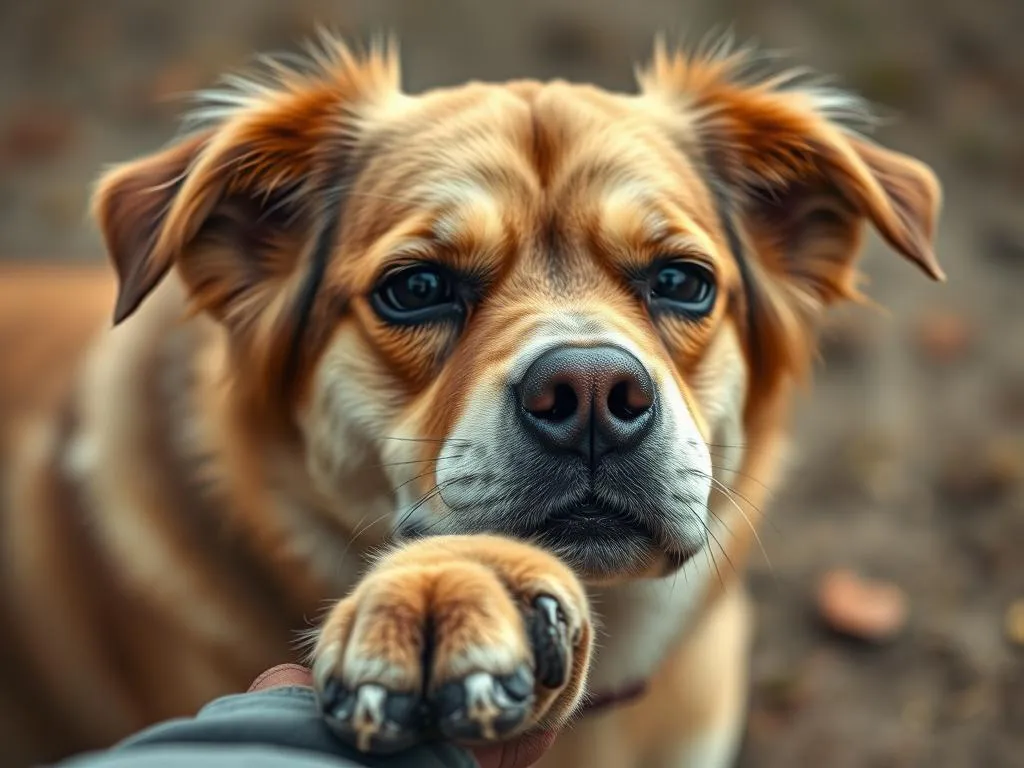
Introduction
Understanding dog behavior is essential for building a strong bond with your furry friend. Dogs communicate in various ways, and knowing the reasons behind their actions can significantly enhance the dog-owner relationship. One common behavior that often leaves dog owners puzzled is when their dog puts a paw on them. Why does my dog put their paw on me? This article aims to explore the reasons behind this behavior, its implications, and how it can affect your relationship with your dog.
Understanding Canine Communication
The Importance of Non-Verbal Cues
Dogs, unlike humans, do not communicate using words. They rely heavily on non-verbal cues, which include body language, vocalizations, and physical touch. Understanding these signals is crucial for interpreting what your dog is trying to convey. For instance, a wagging tail might indicate excitement, while a lowered head can signify submission or fear.
Common Dog Behaviors and Their Meanings
Several common behaviors can help you understand your dog better. Tail wagging generally indicates happiness, while barking can mean excitement, alertness, or even distress. Pawing, however, is a distinct behavior that can signify various emotions and intentions, making it essential to decode its meaning within context.
Reasons Why Dogs Put Their Paws on You
Seeking Attention
One of the most common reasons dogs put their paws on you is to seek attention. Dogs are social animals and are often eager for interaction, whether it be for play, petting, or simply being close to their owner. You may notice your dog pawing at you when you’re busy or distracted, signaling their desire for your focus.
Affection and Bonding
Pawing can also be a sign of affection. Dogs often use physical touch to express their feelings towards their human companions. This behavior is akin to other affectionate actions, such as nuzzling or licking. When your dog places a paw on you, it can be their way of saying, “I love you” or “I want to be close to you.”
Requesting Something
Sometimes, your dog may paw at you to request something specific, such as food, playtime, or a walk. This behavior is often context-driven. For instance, if your dog paws at you while you’re preparing dinner, they might be asking for a treat. Recognizing these cues can help you understand your dog’s needs and respond appropriately.
Anxiety or Discomfort
Pawing can also indicate that a dog is feeling anxious or uncomfortable. If your dog is pawing at you while exhibiting signs of distress—such as panting, pacing, or whining—it may be seeking reassurance. Understanding this context is crucial for addressing your dog’s emotional needs and helping them feel secure.
Instinctual Behavior
Finally, some dogs paw at their owners due to instinctual behaviors rooted in pack dynamics. In the wild, canids often engage in pawing behaviors as a form of social interaction within their packs. By mimicking these behaviors, your dog may be seeking to reinforce their bond with you or assert their place in your “pack.”
Contextual Factors Influencing Pawing
Breed Differences
Certain breeds exhibit more pawing behavior than others. For instance, breeds known for their affectionate tendencies, such as Golden Retrievers and Labradors, may be more prone to this behavior. Understanding your dog’s breed can offer insights into their tendencies and help you interpret their actions more effectively.
Individual Personality
Just like humans, each dog has a unique personality that affects their behavior. Some dogs are naturally more affectionate and social, while others may be more independent. Recognizing your dog’s individual quirks and preferences can help you understand why they might choose to paw at you in specific situations.
Owner-Dog Relationship
The strength of the bond between you and your dog plays a significant role in how they communicate. A well-socialized and trained dog is likely to exhibit more positive behaviors, including pawing as a sign of affection. Conversely, a dog with a troubled past may use pawing as a way to seek comfort or reassurance from their owner.
Responding to Your Dog’s Pawing
Positive Reinforcement
When your dog paws at you, responding positively can reinforce this behavior. A gentle pet or a few kind words can let your dog know that their affection is appreciated. Over time, this positive reinforcement can strengthen your bond and encourage healthy communication between you and your dog.
Addressing Negative Behaviors
If your dog’s pawing seems to stem from anxiety or discomfort, it’s essential to address it appropriately. Techniques such as calming exercises, creating a safe space, or even engaging in gentle training can help manage their anxiety. Recognizing and validating your dog’s feelings will enhance their sense of security.
Encouraging Healthy Communication
To foster better communication with your dog, consider engaging in activities that promote bonding. Regular play, training sessions, and even quiet time together can enhance your dog’s comfort level and improve their ability to express their needs. Keeping an eye on their body language will also assist in understanding their cues better.
When to Seek Professional Help
Identifying Problematic Behavior
While pawing is often a benign behavior, it can sometimes indicate a more significant issue. If your dog’s pawing becomes excessive or is accompanied by other troubling behaviors, it may be time to consult a professional. Signs that you should seek help include persistent anxiety, aggression, or drastic changes in behavior.
Finding a Qualified Professional
When seeking help, it’s vital to find a qualified dog behaviorist or trainer. Look for professionals with experience and positive reviews. During consultations, you can expect to discuss your dog’s behavior and develop tailored strategies to address any issues effectively.
Conclusion
Understanding why your dog puts their paw on you can deepen the bond between you and your furry companion. Whether it’s a plea for attention, a sign of affection, or a response to anxiety, recognizing the intent behind this behavior can enhance your relationship. By observing and engaging with your dog, you can foster a healthy communication dynamic that benefits both of you.
In summary, the nuances of canine behavior play a critical role in how dogs interact with their owners. By paying attention to the various reasons for pawing and responding with empathy and understanding, you can create a nurturing environment that supports your dog’s emotional well-being. Keep an eye on their cues, and enjoy the rewarding journey of companionship with your beloved pet.









